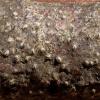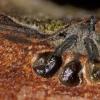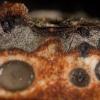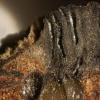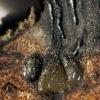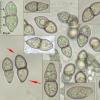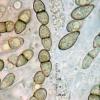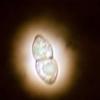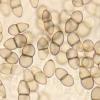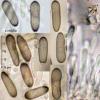
18-12-2025 21:17
Pol DebaenstThe identification took me to Byssonectria deformi

15-12-2025 07:09
 Danny Newman
Danny Newman
indet. Rutstroemiaceae sp. on unk. fallen leavesMc

19-12-2025 10:10
Patrice TANCHAUDBonjour, récolte réalisée en milieu dunaire, a

18-12-2025 17:23
 Bruno Coué
Bruno Coué
Bonjour,je serais heureux d'avoir votre avis sur c

18-12-2025 18:07
Margot en Geert VullingsThese plumes were found on rotten wood.They strong

17-12-2025 18:35
 Michel Hairaud
Michel Hairaud
Bonjour à tous/Hi to everyone I am passing along

15-12-2025 15:48
 Danny Newman
Danny Newman
Melanospora cf. lagenaria on old, rotting, fallen

15-12-2025 15:54
 Johan Boonefaes
Johan Boonefaes
Unknown anamorph found on the ground in coastal sa

15-12-2025 21:11
 Hardware Tony
Hardware Tony
Small clavate hairs, negative croziers and IKI bb
On medium size (40-70 mm in diam.) felled branches of Alnus glutinosa lying on the ground
I have found many inmersed, at first hyaline later greenish, perithecia that no
are into a clearly definited stroma. No ventral black lines. The necks are protruding across a well visible greyish disc.
The asci have an apical refringent apparatus and they are abruptly contracted at their base
(Diaporthales). No paraphyses I have seen. The ascospores are hyaline, later greenish, 1-(0) septate, very polimorphic, with some aberrant forms. No appendages. The spores are surrounded by a gelatinous sheath.
Dispersed between the perithecia they are many inmersed greenish conidiomata that could
be the anamorphic state of this fungus.
What do you think?
Thanks again

I have tried to find out your finding for several hours yeasterday, but without success. I think it belongs to Melanconidaceae and probably near Massariovalsa, a genus with quite darker spores. According to Barr 1978 (Diaporthales and its segregates), your fungus matches the genera Massariovalsa, Hercospora and Hapalocystis, this because of the small layer of a gray stromatic tissue right under the surface, embedding the perithecia into wood and not into a stroma. I have also checked several original descriptions of species of aforementioned genera but without any matching conclusion. Probably a new species, perhaps Walter will say something about it :)
btw: you can put this one into the dropbox, too. Many thanks.
regards,
björn

